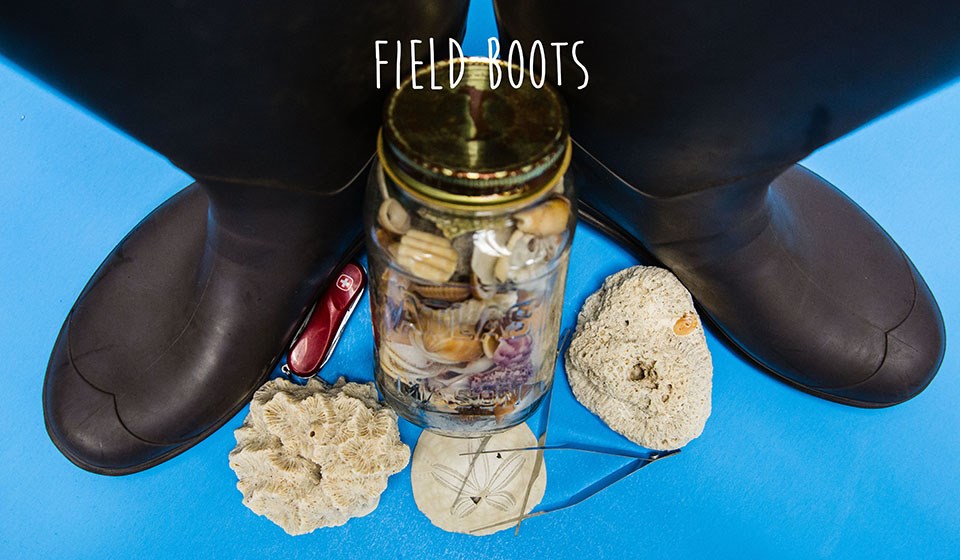Last updated: June 16, 2020
Article
#Sciencedeskdigs: Field Boots

NPS Photo/M.Reed
What is it?
I wore these field boots all through grad school when I was studying rocky intertidal ecology at Muir Beach in Golden Gate National Recreation Area. It is a really interesting ecosystem filled with sea stars, snails, sponges, anemones, and much more. It’s funny that I work with invertebrates because I originally got into this field because I love whales! I think I eventually decided to study invertebrates because if it weren’t for the small things, like sea stars or insects, you wouldn’t have the landscapes or the large megafauna that everyone enjoys seeing in parks. Some invertebrates are “ecosystem engineers” that make the environment usable for other creatures.
I was always interested in becoming a public lands scientist and I have been fortunate enough in my career to receive mentorship from some awesome women bosses; they would both support and push me. These women along with inspirations like Rachel Carson, Sylvia Earle, and both of my parents are the reason I am still in this field today, and why I am so passionate about getting more women in science. When I worked as a STEM teacher, I would have girls tell me that since they weren’t good at math they couldn’t do science. I always reminded them that you don’t have to be a PhD mathematician to do science - all you have to do is work hard at it.
Favorite Quote?
“Those who contemplate the beauty of the earth find reserves of strength that will endure as long as life lasts."
-Rachel Carson

NPS Photo/M.Reed

NPS Photo/M.Reed
